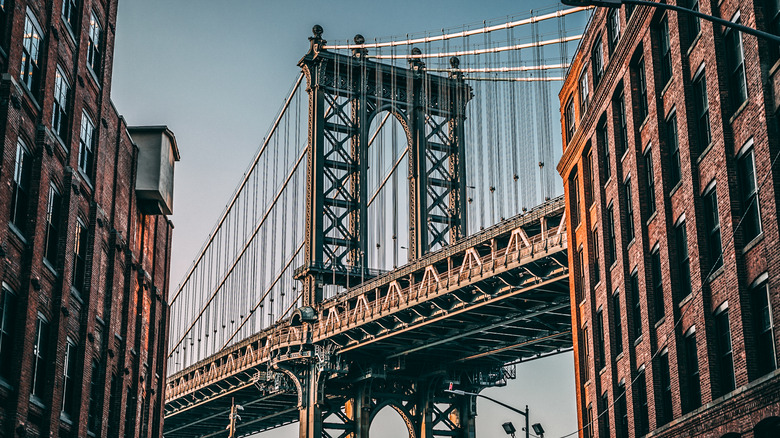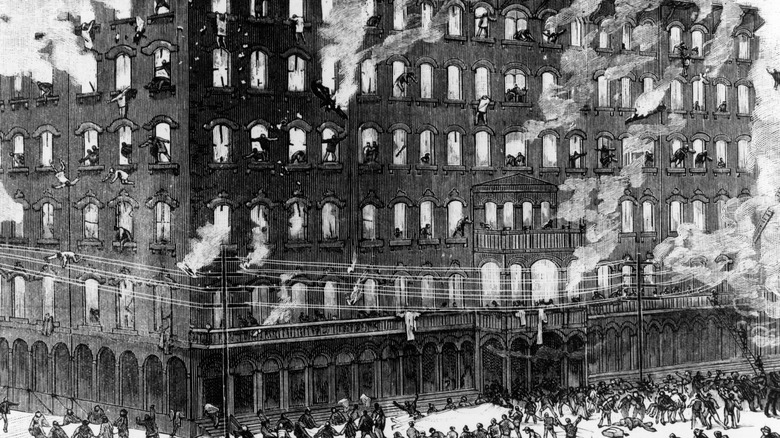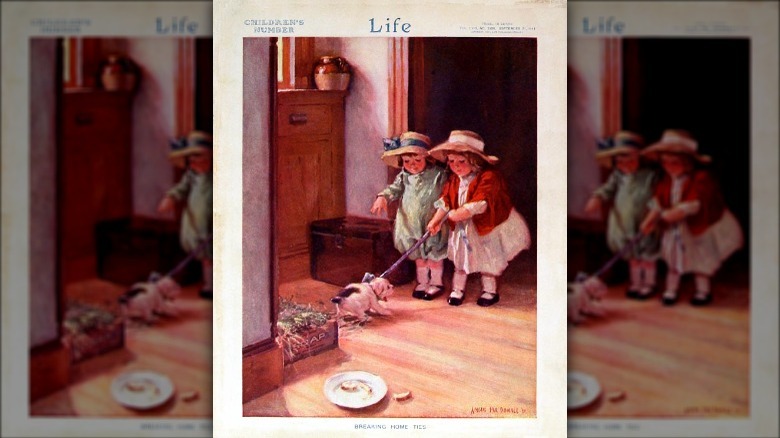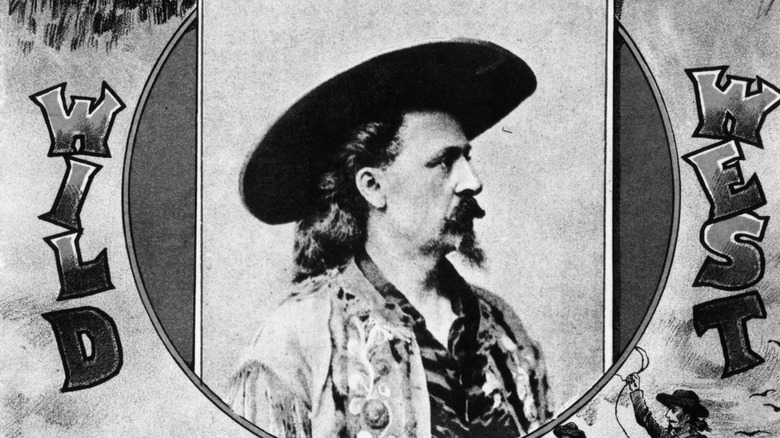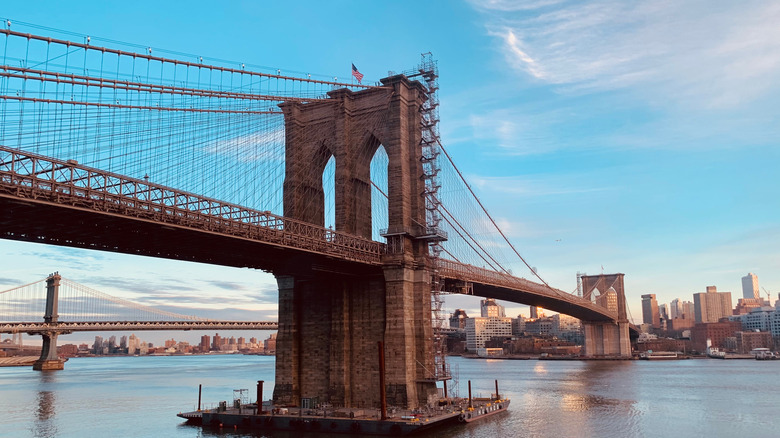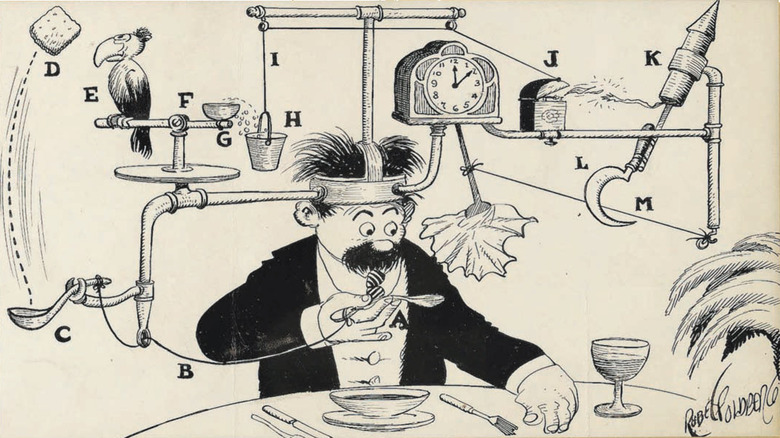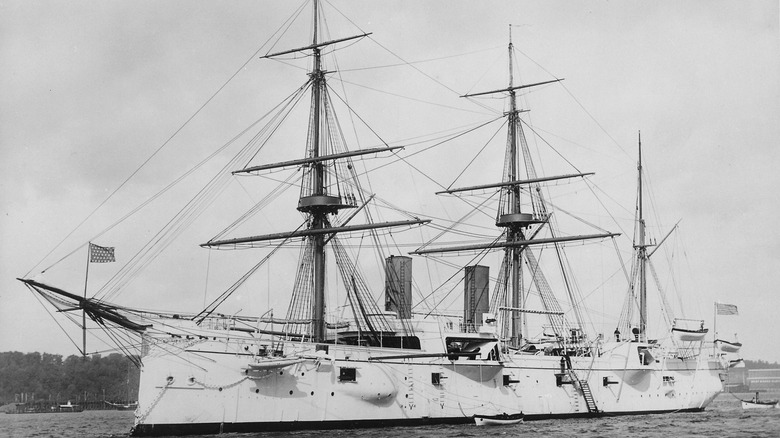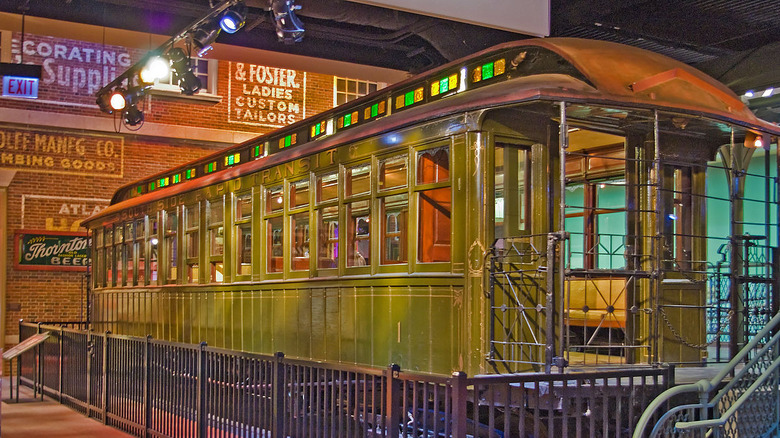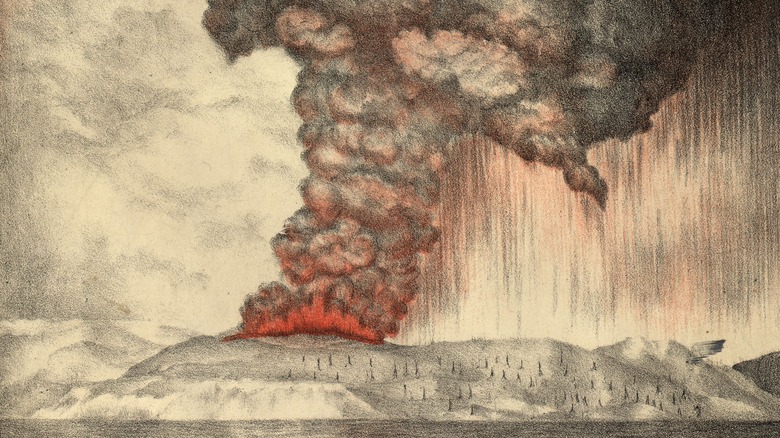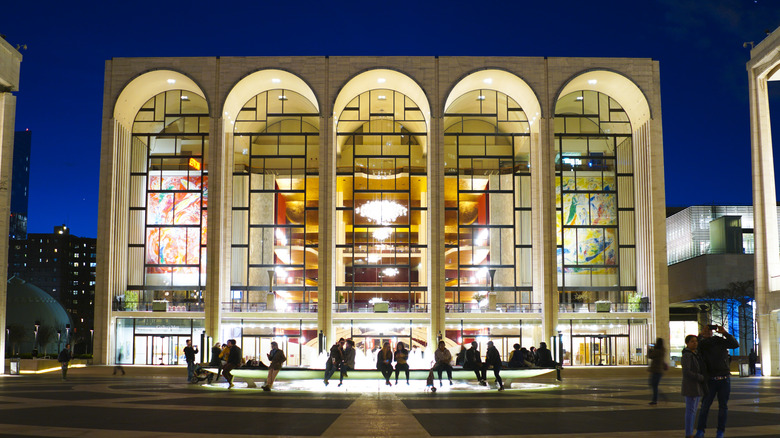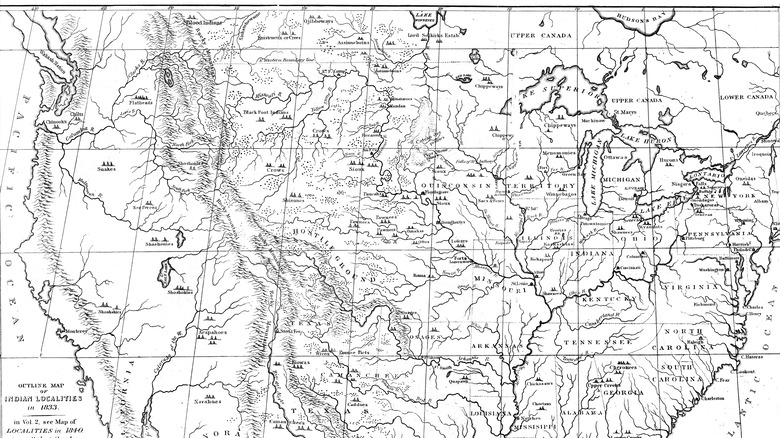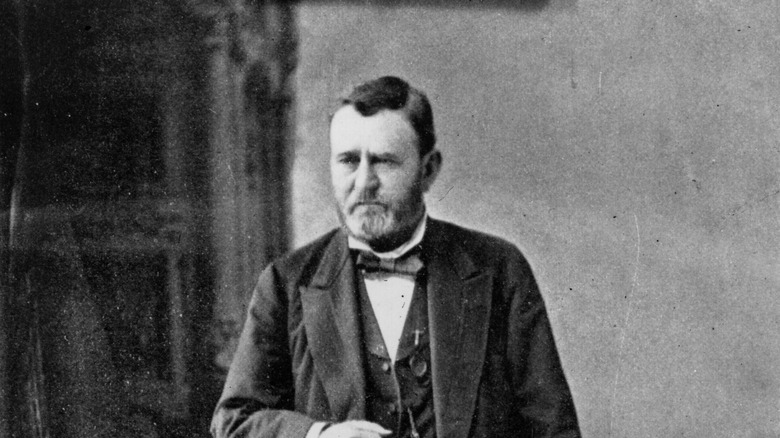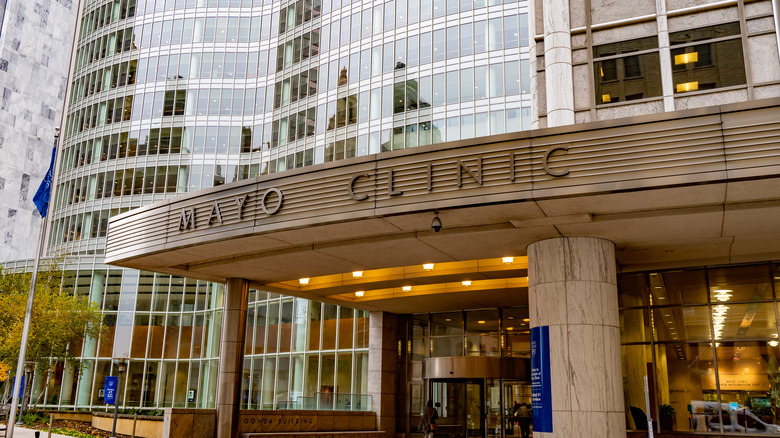The Biggest Events To Happen In 1883 America
While every year in American history has plenty of noteworthy events, many years are simply more memorable than others — it's been that way since the first year of United States history, 1776. Many famous years from history are noted for the outbreak of warfare, such as the years 1812, 1861, and 1941. Others are noted for tragedy, such as 1929 for the collapse of Wall Street, 1963 and 1968 for assassinations, 2001 for terrorist attacks, and 2020, which will of course be remembered as the year of the outbreak of the COVID-19 pandemic.
Other years are celebrated for exciting occasions, such as 1849, the year Americans caught "Gold Fever," or 1969, the year of the first moon landing and the Woodstock music festival. Then there are those other years — years for which notable historical events may no longer come readily to mind but that still held many fascinating events worth recalling. And the year 1883 was just such a time. While not top-of-mind for the casual history enthusiast of our day, much happened that year, now nearly 140 years in the past, that had contemporaries talking. And as 1883 is back on the American mind thanks to popular current television, now seems the perfect time for a look back.
Here are 12 of America's most momentous occurrences of the year 1883.
Fire at the Newhall House Hotel kills 76
In the early morning hours of January 10, 1883, a fire broke out at the famed Newhall House Hotel in downtown Milwaukee, Wisconsin, that would end up being one of the deadliest fires in American history. Built in 1856 by Daniel Newhall, a well-to-do merchant, according to the Wisconsin Historical Society, the eponymous Newhall House Hotel was a popular upscale destination, a must-visit for anyone in "society" that visited the town. But it was a destination that was almost destined for disaster. The local fire department had already flagged the hotel as being at high risk for a dangerous fire, and members of the department later expressed no surprise at the quick spread of — and awful devastation caused by — the flames that day.
On that early 1883 morning, the fatal Newhall House Hotel fire broke out in an elevator shaft within the building and raced through the structure so fast that dozens of guests were forced to leap from windows to gain any possible chance of survival, and many died in the fall nonetheless. In all, 76 people are known to have perished as a result of the Newhall House Hotel fire, though some estimates put the figure at 90 or more — the hotel's ledger was incinerated in the blaze so specific records of the guests on the premises were lost. The event was, for many decades, the deadliest hotel fire in American history, though eventually many other hotel fires would surpass the body count, notably the Winecoff Hotel fire in Atlanta in 1946, in which 119 people perished (via WSBTV).
Life Magazine established as weekly publication
Life Magazine was founded in the year 1883, beginning publication in January, according to the Archives & Manuscripts division of The New York Public Library. But to be clear, this newly minted magazine was entirely separate from LIFE Magazine, the photo-heavy publication whose iconic images would define much of 20th-century life. The original Life Magazine, published in New York weekly and distributed widely, was a magazine loaded with satire, criticism, cultural reviews, cartoons, and so on. You can think of it more akin to the more acerbic sections of today's New Yorker, such as the "Shouts and Murmurs" page or the essays by various cultural critics.
Life Magazine was founded by a man named John Ames Mitchell who was known for strong opinions and a willingness to share them, according to 2Neat Magazine. In fact, the content Mitchell published in his magazine led to frequent lawsuits. Life was published continuously until the year 1936, meaning it had a 53-year run, quite an achievement for any periodical, its run helped along not only by the writing but also its popular cartoons and covers with artwork by such notables as Norman Rockwell, whose paintings graced the cover more than two dozen times.
And note that Life did not fold because it fell out of favor, but rather was yet another victim of the challenging financial times of The Great Depression — running a magazine was a hard way to make a buck. It was not only a commentary on its times, but became a piece of history via which we can now look back at the people, places, and events as they were starting way back in the year 1883. While very much of its time, today the magazine is rather a time capsule, in other words.
Buffalo Bill launched his famous Wild West show
Already by the year 1883, much of the so-called "Wild West" was actually settled and relatively peaceful — at the horrific expense of the natives who had lived their for centuries, of course, and with myriad animal populations and once pristine swaths of land devastated. But with the "wild" American West already a part of wider cultural imagination, William F. Cody, better known as Buffalo Bill, took advantage of the mythical western appeal and founded his famous traveling show in May 1883, bringing a verisimilitude of the west to paying customers.
A genuine adventurer before he turned showman, Buffalo Bill was indeed a former buffalo hunter, a scout, and a soldier in the United States Army, in which capacity he fought in the Civil War and later against natives, and he was revered for his prowess with a gun and for his knowledge of the western wilderness, according to Britannica. All told, he was just the man to bring "The West" to the world.
The traveling show Buffalo Bill originated was named "Buffalo Bill's Wild West," not "Buffalo Bill's Wild West Show," as it is often called, and according to the Buffalo Bill Center of the West, it involved everything from expert shooting demonstrations to acted-out stagecoach robberies to displays of horsemanship and livestock roping. The show would evolve over the coming years, introducing many other acts, and eventually include female performers, and it remained popular into the early years of the 20th century. But by the year 1913, interests had shifted, and the Wild West show found itself bankrupt. Buffalo Bill Cody briefly turned to making movies, but he died in 1917 at the age of 70.
The Brooklyn Bridge is opened
Far and away one of New York City's most famous landmarks — and indeed one of America's most famous, at that — the Brooklyn Bridge is also one of its most useful conduits, transporting heavy traffic each and every day. As of the year 2018, an average of more than 116,000 vehicles, 30,000 pedestrians on foot, and 3,000 bicyclists travel across the Brooklyn Bridge each day, according to the New York City Department of Transportation. And they are doing so on one venerable piece of civic infrastructure, the bridge having been opened in 1883 after 14 years of construction and, according to History, at a cost that would have equaled more than $320 million in today's dollars.
Sadly, also of historical note were the deaths of 12 on the bridge on May 31, 1883. They were crushed in a stampede caused by a sudden panic resulting from a woman slipping down the stairs and screaming, which led to a panic as word spread that the bridge was about to collapse. About a year later, on May 17, 1884, famed circus operator P.T. Barnum directed a column of 21 elephants across the bridge in an exaggerated but effective stunt showing that the bridge was not liable to crumble into the water of the East River below but was in fact stable, sound, and safe.
Famed cartoonist Rube Goldberg was born
By the time of his death in the year 1970, Rube Goldberg was one of the most famous cartoonists to have lived. And in fact, according to RubeGoldberg.com, he remains — to this day — the only cartoonist ever to have his name listed in a dictionary as an adjective. A "Rube Goldberg"-style of contraption is one that uses comically overcomplicated steps and devices to "simplify" an everyday task, such as pouring a cup of coffee, buttering bread, or using a napkin to clean one's chin while dining.
Goldberg was born in San Francisco on the fourth of July in 1883 and would go on to create nearly 50,000 cartoons in the course of his long career (via Smithsonian Magazine). His studies in engineering at the University of California, Berkeley helped inform the complex, imaginative "machines" he designed on paper, and his work was published in newspapers and magazines, making them easy to see worldwide.
The first steel ships join the U.S. Navy
The year 1883 saw the United States Navy finally enter into the modern era. That's because, according to the National Museum of the U.S. Navy's "Naval History and Heritage Command" publication, on March 3, 1883, the Navy finally authorized construction of steel ships. Though it would be several years before a new generation of modern American ships were plying the seas, the pivot to the future had begun with congressional approval of four new warships, according to Britannica.
This renewal of the United States Navy began the construction of the so-called ABCD ships, these being the USS Atlanta, the USS Boston, the USS Chicago, and the USS Dolphin. The ships featured hulls made of steel and a mix of propulsion systems. They could able to travel using coal fire-generated steam power, but they could also still use sails, a holdout from the centuries of ship designs that had come before. The so-called "Steel Navy" would soon replace outdated and vulnerable wooden vessels, and within less than two decades, new steel warships would see action when America battled Spain in the Spanish-American War, a conflict in which the modern ships were overwhelmingly victorious against antiquated vessels used by the Spanish.
First elevated electric train service launched
The modern era of municipal public transportation in the United States of America was born on June 2, 1883. And it was not in the city most closely associated with subways, New York City, but rather in Chicago, Illinois. It was on that early summer date that an electrically powered elevated train made its first trip, ushering in the use of a technology still thriving today, nearly a century and a half later, according to Wired.
The first electric El Train, designed by Thomas Edison and Stephen Field, would only be used as a demonstration device proving the technology worked, but between early June and the end of the month, it carried nearly 27,000 passengers on a track measuring a third of a mile long. The train moved at about nine miles per hour.
For the record, elevated train service itself was not new — such vehicles had been in use for more than a decade, but they were powered by steam, not by electricity. And an electric train had been used before; in 1879, a German inventor, Werner Seimens, demonstrated a train car that used electric power to carry a small number of passengers on a track measuring about 600 feet long. But the 1883 electric elevated train combined both, as its name implies.
Krakatoa volcanic eruption impacts sunsets in America
On August 27, 1883, the eruption of the Krakatoa volcano became one of the deadliest events in all of human history. Located in the Indonesian archipelago, Krakatoa was a small piece of land, less than six miles across at its longest measurement. But the eruption that obliterated much of the island was so powerful it would quite literally have effects all around the earth, including in America, a nation almost diametrically opposite to the eruption site — or on the far side of the world, in other words.
According to Live Science, the force of the Krakatoa eruption equalled a blast of 200 megatons of TNT. For reference, the nuclear bomb dropped over Hiroshima unleashed a blast measured at 20 kilotons of TNT, meaning Krakatoa's explosive power was about 10,000 times more powerful than that of the bomb. An estimated 36,000 people were killed as a result of the eruption, the sound of which could be heard in cities nearly 3,000 miles away. In the United States, the sunsets were deeply colored for days following the eruption due to the countless tons of material expelled into the atmosphere, and temperatures were more than a degree cooler than average for five years following the blast due to the atmospheric effects.
The New York Metropolitan Opera opens
For generations, The Met has been considered one of the world's premier houses of the performing arts. In fact, it has been an august establishment ever since it was first opened in October 1883. It was then located on Broadway at 39th Street in downtown New York City, though today the Met is at 30 Lincoln Center Plaza. (And it is not to be confused with the New York Metropolitan Museum of Art, also often called The Met, which is indeed confusing.) The establishment of a permanent home came three years after the founding of the Metropolitan Opera Association of New York City, which had been organized in 1880, according to the World History Project.
According to Met Opera, the original opera house was funded by a group of wealthy businessmen who wanted a theater they could attend regularly. The Metropolitan Opera's new venue was inaugurated with a performance of Charles Gounod's epic "Faust," the story of magician who sells his soul to the devil — the Faustian Bargain. The play, though written in German, was performed in Italian in accordance with preferences of the times. Eventually the theater adopted the practice of performing almost all works in the language in which they were originally written.
Today, the Metropolitan Opera is considered America's largest classical music organization, annually presenting as many as 220 opera performances.
The United States (unofficially) adopts time zones
Today, we take it for granted that the continental United States of America has four times zones: Eastern, Central, Mountain, and Western. But prior to the year 1883, the nation was not divided as such. According to History, it was not until November 18, 1883, that time zones first began to be used in America, and their adoption came not because of a government mandate, but rather the implementation came from the commercial sector — specifically railroad companies.
In a bid to make scheduling and tracking trains easier, more efficient, and more reliable, train companies agreed with one another to begin using the four time zones and denoting their corresponding regions, making sure all rail company clocks within said zones were synched up. Much of the country beyond the railroad companies quickly adopted the use of these time zones, but they were actually not officially adopted by the federal government for more than three decades to follow. It was not until 1918 that the Standard Time Act enshrined the use of time zones in law.
Northern Pacific Railway Route completed with ceremonial spike driven by President Grant
While hardly as famous as the completion of the Transcontinental Railroad that took place on May 10, 1869, near Promontory, Utah, the completion of the Northern Pacific was of great importance to citizens of Montana and to many in the greater Pacific Northwest beyond, according to PBS Thirteen. When the final spike was driven into the ground near the western border of Montana, it connected the east and central areas of the northern American states with the west, opening up opportunities for trade and travel.
On hand to drive home that last spike on September 8, 1883, was none other than Ulysses S. Grant, according to OTE Corporation, then out of office after having served two terms as president. The Northern Pacific rail line connected the Pacific Northwest with multiple states in the north, the line terminating in Minnesota and with total track measured at nearly 7,000 miles.
Mayo Clinic established after devastating tornado
Today, the Mayo Clinic is one of the world's leading centers of medical care, research, and education, and it is respected globally as a leader in these efforts. But when it was formed, it was an emergency triage center. That's because the institution that grew into the Mayo Clinic of today started after a horrible tornado ravaged Rochester, Minnesota, in late August 1883.
On August 21, as evening settled, twirling winds ripped through much of the city, killing dozens of people and leaving hundreds injured, according to Minn Post. Doctor William Worrall Mayo, along with help from his sons and many other volunteers, established a makeshift hospital to help treat the wounded. Several months later, their quickly established medical center would grow into the Saint Mary's Hospital, which was later renamed the Mayo Clinic in honor of the doctor. And over the years it would grow into the institution as it's known today.
